Three days ago I smelled something WONDERFUL! I forgot about my people, I forgot about my yard, I forgot about everything but trying to get to what promised to be the BEST thing that ever happened to me in my short life. Being a smart, manly dude, I managed to get out to find the origin of that wonderful smell and all the heavenly rewards it promised. I looked really hard, and ran really fast (more about how fast I can run, later), but in the end all I managed to find were my people. I didn’t understand, but they were really upset. They put me in the car which was really exciting (I love car rides), but they took me out at a noisy place that was full of strangers barking, whining, and smelling of fear. My people left me and a stranger took my picture (not my best…you can see it below) and put me in a cage with strange dogs barking, crying, and smelling above, below, and on both sides of me.
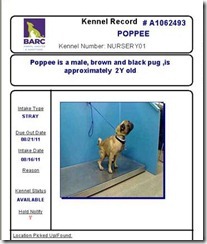
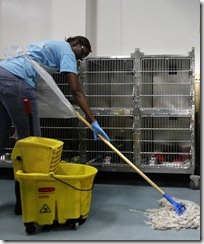
They were always mopping the floor and the cages with sharp-smelling water that made me sneeze and my eyes water. My people were no where to be found.
I didn’t like that place. I really didn’t like that place when they put me on a table and poked me with something sharp and put stuff in my eyes. But I got kibbles…and I love kibbles. Three long days and nights I spent in that awful place and then today somebody came and put a leash on me and took me OUTSIDE! Waiting for me was another stranger, but she smelled good. Lots of happy doggy smells. And best of all she opened her car door and I couldn’t wait to get inside. I jumped from the ground to the seat in one big leap and then explored the front seat, the back seat, and a big space behind the back seat all in about 15 seconds. Then the good-smelling stranger got in and I had to show her I like laps and give big sloppy kisses.
 I went for a short ride. I tried to drive, but the nice-smelling stranger wouldn’t let me keep my paws on the steering wheel. I did manage to find several things on the floor to chew, though…. But then it was time to get out of the car and I saw a green fence and a big red gate. I couldn’t WAIT for the nice-smelling lady to open the gate, so I tried to help her…showing how tall I can stand on my back legs, and how strong I can scratch. But FINALLY she got it open, and inside was PARADISE. And best of all, she took off the leash and I could show her how fast I can run!
I went for a short ride. I tried to drive, but the nice-smelling stranger wouldn’t let me keep my paws on the steering wheel. I did manage to find several things on the floor to chew, though…. But then it was time to get out of the car and I saw a green fence and a big red gate. I couldn’t WAIT for the nice-smelling lady to open the gate, so I tried to help her…showing how tall I can stand on my back legs, and how strong I can scratch. But FINALLY she got it open, and inside was PARADISE. And best of all, she took off the leash and I could show her how fast I can run!
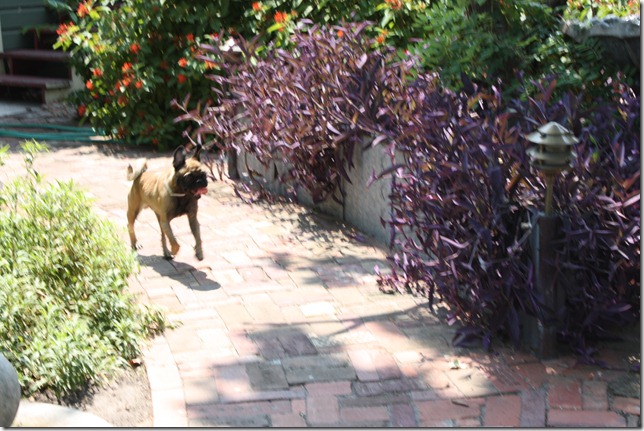
There was water, fountains, and plants everywhere. I took a drink after making two laps around the yard so I could reload to keep marking this great place! The water felt so good on this hot day, I decided to see if I could dig it all out of the bowl. The splashing water was really fun!
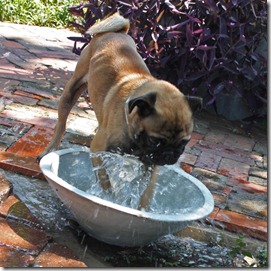
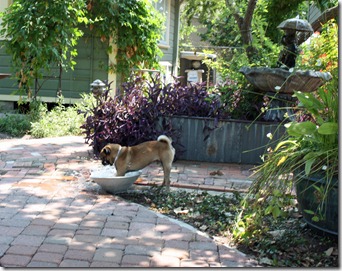
And then I discovered I wasn’t alone in this garden. There were two neighbors, but they were on the other side of a fence. They were pretty friendly, though, so I gave them some good sniffs. I minded my manners, though, and didn’t bark.
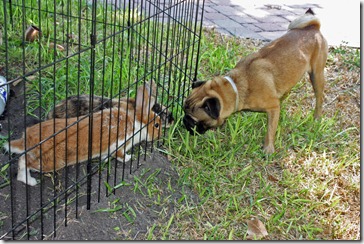
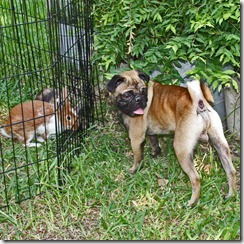
The nice-smelling lady kept following me with this big black camera, so I decided to pose for her. First I gave her the pose I saw on TV when I watched the the dog show, and then I broke out my best close-up smile.
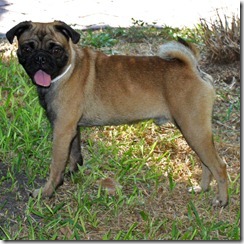

Then it was time to run again.
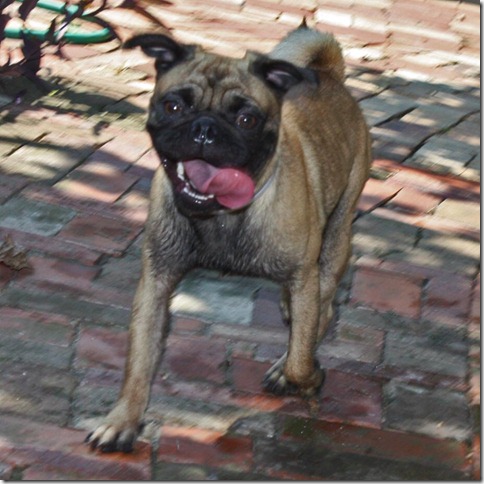
She managed to catch me a few more times, especially when she called my name.

I visited the water bowl a few more times, digging until it was empty and I was all wet. Then I decided it was time to go get some petting since she was sitting on the step.
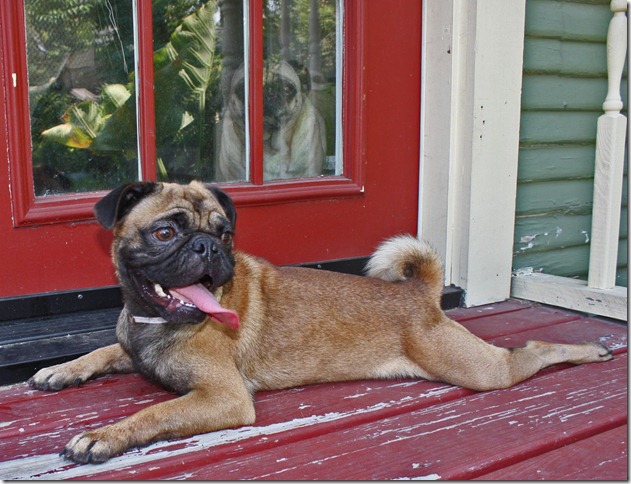
See? I can sit still too! Aren’t I a handsome boy? And my brown color is so special, especially when you compare with that ordinary pug on the other side of the door. By the way, isn’t it time to meet the rest of the pack I’ve been smelling out here in the garden?
So then the lady opened the door and I got to sniff all these other dogs. I bowed my head and looked away when the alpha bitch checked me out, and then I found a playmate to chase me! Can this day get any better?
And then the lady put a harness on me and took me for another car ride! But this time I couldn’t get out of the back seat since she tied the leash to the seat. But I managed to stretch it out and get my front feet on the console so I could give her kisses and rest my head on her shoulder while she drove. It wasn’t as much fun as jumping over the seats, but it was a longer ride, so that was OK.
Then we pulled up to a new place. It smelled pretty good, too, and there were more nice people there.

My nice smelling lady told the new people my name was Popsee, which sounded pretty good to me. I gave her kisses whenever she said it to show my approval. I got to go outside and potty and then I think I smelled kibbles! This has been the best day.
P.S. from the good-smelling lady: Popsee is heartworm negative, young, boisterous, and a very unusual color. He’s all boy, and needs to be neutered so he’ll never try to find those wonderful smells again. Want to continue his adventure in your home?